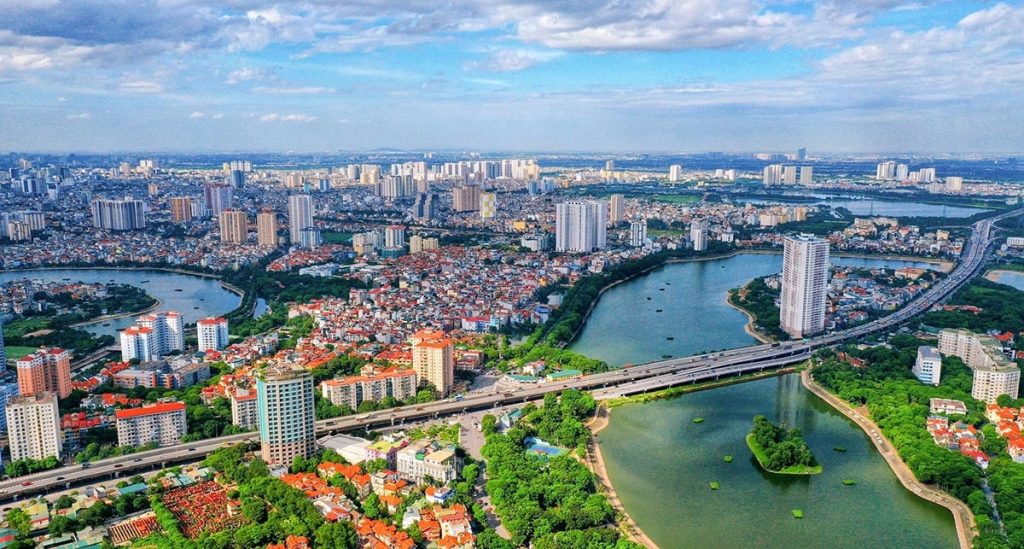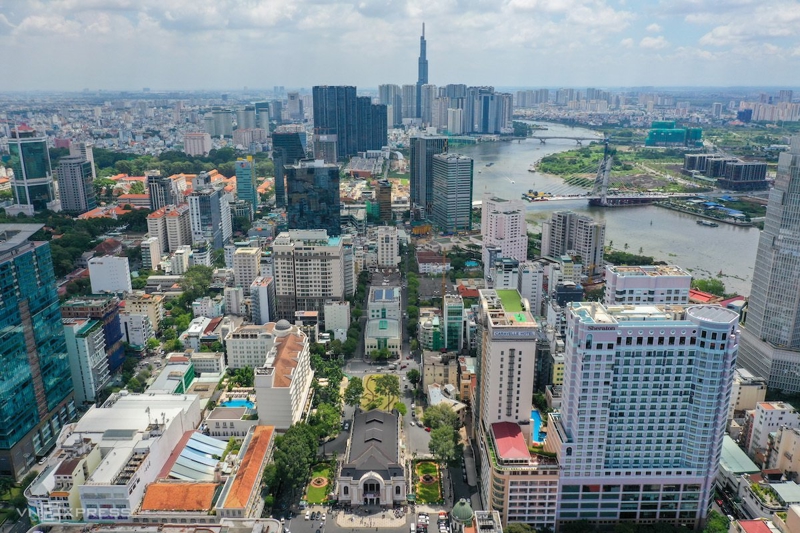That is the assessment of Ms. Pham Thi Mien, Deputy Director of the Vietnam Real Estate Market Research and Evaluation Institute, in a recent interview with reporters. According to her, the housing market is entering a dynamic phase with the comeback of numerous large-scale projects, particularly in suburban areas of Hanoi and Ho Chi Minh City (HCMC). However, the persistent supply–demand imbalance remains unresolved, and prices continue to rise.

Reporter: How do you evaluate the supply trend of the housing market recently?
Ms. Pham Thi Mien: The market has regained its momentum with a wave of new project launches and sales across many localities, especially in the suburban zones of Hanoi and HCMC. Yet, this recovery has not eliminated the long-standing supply–demand gap. Most newly launched projects belong to the high-end segment, with average prices exceeding VND 100 million per square meter. Within the overall new launch structure, the shares of premium, luxury, and ultra-luxury products have risen sharply compared with the previous quarter, while the affordable segment has nearly disappeared—accounting for only about 3%, mainly social housing.
A positive sign is the broader geographic distribution of new supply. Instead of being concentrated in central districts, it is expanding to satellite cities, where land reserves are abundant, and investment costs are more reasonable. Nevertheless, the market remains dominated by major developers, among which Vingroup continues to contribute the largest share of new supply during the first nine months of the year. Meanwhile, the participation of small and medium-sized developers, especially in the South, is enhancing competition and market diversity.
Reporter: What are your views on the price trends recently?
Ms. Pham Thi Mien: Prices have continued to increase sharply in both major cities. In Hanoi, primary market prices have risen steadily, pushing overall market levels to new records. As many consider real estate a safe-haven asset against inflation, secondary market transactions have also become active. Several projects have seen price hikes of hundreds of millions to several billion dong in a short time, particularly those within well-planned urban areas.
In HCMC, the upward trend has spread widely, focusing on projects with completed legal status, good infrastructure connectivity, and reasonable pricing. Notably, investment capital inflows from the North, especially Hanoi, have injected fresh momentum into the southern market. Some projects have recorded a 5% price increase within just one week.
Secondary market activity has become livelier as primary market units remain expensive and are mostly off-plan products. However, actual secondary transactions are still limited due to the scarcity of available stock, while most owners have no intention to sell. Investors prefer to hold in anticipation of further appreciation, whereas end-users continue to wait for more suitable opportunities.
Overall, housing prices are unlikely to cool down in the short term. With land, materials, and financing costs all rising, developers are compelled to focus on premium segments to maintain profit margins. At the same time, financially strong buyers remain willing to pay high prices for long-term asset accumulation, keeping the overall price level elevated.

Reporter: With prices so high, how is the market’s purchasing power?
Ms. Pham Thi Mien: The demand for homeownership remains strong thanks to urbanization, economic growth, and the expansion of the middle- and upper-income class. However, real purchasing power is being strained by the price surge. The widening gap between income and housing prices makes homeownership increasingly out of reach for young buyers. The market is now largely driven by investment capital. As monetary liquidity improves, many investors are returning to real estate as a hedge against inflation. They tend to choose projects that meet both residential use and rental yield expectations, with capital appreciation potential still being the key driver for investment decisions.
Reporter: What is your outlook for the condominium market in the near future?
Ms. Pham Thi Mien: From now until the year’s end, the market is expected to welcome new supply from a number of large-scale projects completing legal procedures and preparing for launch. The condominium segment will continue to play a dominant role in total new supply. Transactions are likely to increase in proportion to the volume of new launches but will become more selective. Buyers now pay great attention to developer reputation, legal transparency, and infrastructure and amenity connectivity.
The shift of supply toward satellite urban areas will continue to intensify. Locations with synchronized transport infrastructure and comprehensive social facilities—such as schools, hospitals, sports complexes, and shopping centers—will be preferred destinations. Moreover, the expansion of ring roads, metro lines, and inter-regional expressways will further enhance suburban property values.
However, housing prices in Hanoi and HCMC are likely to keep climbing as central land reserves become increasingly scarce while demand remains strong. Only wealthy buyers will be able to access high-end supply, whereas the affordable housing segment still needs more policy support and development mechanisms to thrive.
Reporter: Thank you for the insightful discussion!


 Zalo
Zalo Webchat
Webchat